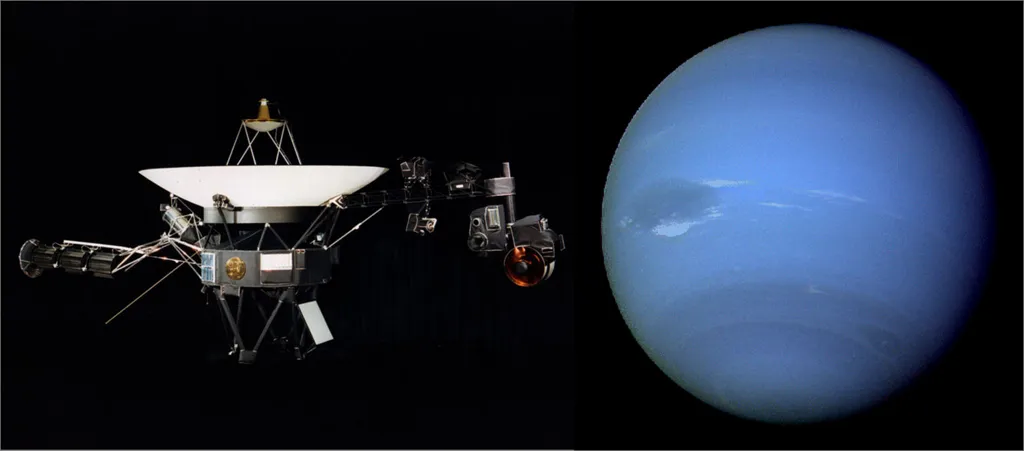Description
 Copyright infringement not intended
Copyright infringement not intended
Context: NASA's Voyager 2 spacecraft, which is currently exploring the outer reaches of the solar system, has encountered a communication problem due to an antenna misalignment. The problem occurred after a set of planned commands were executed by the spacecraft on July 21, resulting in the antenna deviating 2 degrees from its optimal orientation towards Earth. As a consequence, Voyager 2 is unable to receive any instructions or send back any data to Earth.
Details
- Voyager 2 is a space probe launched by NASA in 1977, to explore the outer planets of our solar system.
- It is part of the Voyager program, which also includes its twin spacecraft, Voyager 1.
- The primary mission of Voyager 2 was to study Jupiter, Saturn, Uranus, and Neptune, and it provided invaluable data and images during its flybys of these planets.
.jpg)
Key features and achievements of Voyager 2 include:
- Multi-Planet Exploration: It is the only spacecraft to have visited all four of the solar system's giant outer planets: Jupiter, Saturn, Uranus, and Neptune. Its trajectory allowed it to fly by each of these planets and gather scientific data about their atmospheres, compositions, and magnetic fields.
- Jupiter Encounter: During its flyby, it discovered a previously unknown moon of Jupiter and provided detailed images of the planet and its moons, including the famous "Great Red Spot."
- Saturn Encounter: It captured stunning images of Saturn's rings and its many moons, including close-up views of Titan, Saturn's largest moon, which has a thick atmosphere.
- Uranus Encounter: It is the first and only spacecraft to visit this distant ice giant. It discovered 10 previously unknown moons and two new rings around Uranus.
- Neptune Encounter: It provided the first close-up images and data of this icy blue planet. It discovered five new moons, four faint rings, and a massive storm called the "Great Dark Spot."
- Voyager Interstellar Mission: After completing its primary mission to explore the outer planets, Voyager 2 continued its journey beyond the solar system. In 2018, it crossed the heliopause—the boundary that separates our solar system from interstellar space.
- Long-Distance Communication: Despite its immense distance from Earth, Voyager 2 continues to communicate with scientists on Earth through NASA's Deep Space Network. However, as mentioned earlier, it faced a recent communication problem due to antenna misalignment, but NASA is hopeful that the issue will be resolved during the next orientation reset.
Conclusion
- Voyager 2's mission has been a remarkable success, providing crucial insights into the outer planets and paving the way for future interstellar exploration. It remains one of humanity's farthest and most enduring spacecraft, continuing its journey into the vastness of space.
Must Read Articles:
Space Communication: https://www.iasgyan.in/blogs/space-communication
|
PRACTICE QUESTION
Q. What was the primary objective of NASA's Voyager 2 spacecraft?
1. Explore the inner planets of our solar system.
2. Investigate the possibility of life on Mars.
3. Study the outer planets of our solar system.
4. Search for black holes in deep space.
How many of the above statements is/are correct?
A) Only 1
B) Only 2
C) Only 3
D) All
Answer: A
Explanation:
Statement C is correct: Voyager 2's primary objective was to study the outer planets of our solar system, including Jupiter, Saturn, Uranus, and Neptune. It provided valuable data and images during its flybys of these gas giant planets.
|
https://www.hindustantimes.com/technology/nasa-voyager-2-latest-updates-travelling-in-interstellar-space-loses-ground-communication-101690647391445.html
https://t.me/+hJqMV1O0se03Njk9





 Copyright infringement not intended
Copyright infringement not intended







